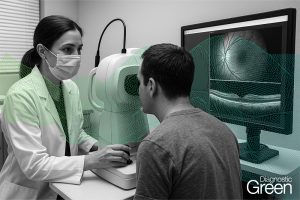Aims: To correlate the hyperfluorescent lines in the peripheral fundus on late-phase indocyanine green angiography (ICGA) to infrared and optical coherence tomography (OCT) findings.
Methods: This is a retrospective, cross-sectional study. Multimodal imaging data, including ICGA, fluorescein angiography, infrared imaging, and OCT were analyzed. The hyperfluorescent lines were categorized into 2 grades according to their extents. In addition, serum levels of apolipoprotein (Apo) A and B were measured by enzyme linked immunosorbent assay.
Results: A total of 247 patients who underwent multimodal imaging were reviewed. The hyperfluorescent lines in the peripheral fundus on late-phase ICGA were detected in 96 patients, and were correlated to superficial choroidal arteries by infrared imaging and OCT. The incidence of hyperfluorescent choroidal arteries in the peripheral fundus (HCAP) on late-phase ICGA increased in groups of older ages (0-20 years, 4.3%; 20-40 years, 2.6%; 40-60 years, 48.9%; >60 years, 88.7%; p < 0.001). In addition, the mean age increased with the grades of HCAP (grade 1, 52.3 ± 10.8 years; grade 2, 63.3 ± 10.5 years; p < 0.001). The hyperfluorescence was also detected in posterior choroidal arteries in 11 eyes, all patients in grade 2. There was no significant correlation between grades of HCAP and gender, or serum level of ApoA and ApoB.
Conclusion: The occurrence and grades of HCAP increased with age. The superficial location of choroidal arteries in the peripheral fundus exposes their hyperfluorescence on late-phase ICGA. HCAP might reveal the local lipid degeneration of choroidal artery walls, according to ICG binding properties.




